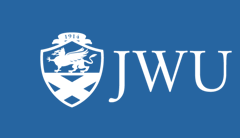To download dissertations and theses, please click on the appropriate "Download" button for your campus to log in and be e-verified. When you reach the "Sign into your JWU email" page, enter your JWU username and password.
Non-JWU users: Please talk to your librarian about requesting this dissertation through interlibrary loan.
Understanding career progression for women in higher education advancement: Gender bias and personal choice
Abstract
Institutions of higher education in the United States currently face a growing budget crisis as public funding steadily diminishes while costs skyrocket (Rosenstone, 2004). Increasingly, institutions are turning to fundraising to offset lagging revenues (Carnesale, 2000), because tuition increases are becoming untenable (Spencer, 2002). While critical to financing higher education, the fundraising field itself faces significant challenges. Fundraisers most commonly cite staffing and leadership dilemmas within their own development offices as most problematic (Association of Fundraising Professionals, 2007). Fundraising has become a highly professionalized and mobile field. Yet, attracting and retaining top talent are issues that plague all nonprofits (Herbst, 2005), particularly at leadership levels (Baldwin, 2007; Bell et al., 2006; Stannard-Friel, 2007). Coupled with these challenges is the possibility of a glass ceiling in fundraising – a term symbolizing instances in which women and minorities are prevented from attaining top leadership positions in organizations solely because of gender or race (Equal Employment Opportunity Commission, 2004). Women comprise the majority of all advancement employees (Taylor, 2005), yet are generally undercompensated as compared to their male colleagues and also underrepresented in nonprofit leadership ranks (Gibelman, 2000; Sampson & Moore, 2006). This raises the question of why, in the midst of a staffing crisis, greater numbers of women are not promoted to fill the current overabundance of vacant positions. The literature offers many potential theories to explain female undercompensation and underrepresentation in advancement leadership; however, these theories vary widely from intentional gender bias (Sampson & Moore, 2006) to personal choices made by women themselves (Joslyn, 2003). This mixed methodology research study employed a questionnaire and follow-up focus group interviews with female advancement professionals to discover if women in higher education advancement perceive that they are affected by a true glass ceiling, or whether other factors, such as opting-out, may instead be responsible for female undercompensation and underrepresentation in their field. By understanding the motivations and aspirations of women in higher education advancement today, effective solutions can be implemented to inform advancement leadership, to enhance the available talent pipeline, and to provide opportunities for professional development leading to staff success and loyalty.
Subject Area
Womens studies|School administration|Labor relations|Higher education
Recommended Citation
Owen, Sandy A, "Understanding career progression for women in higher education advancement: Gender bias and personal choice" (2009). Dissertation & Theses Collection. AAI3355053.
https://scholarsarchive.jwu.edu/dissertations/AAI3355053

